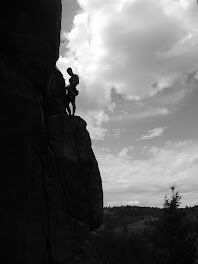18 Free Online Art Education Resources
If you would love to explore your creative side by learning more about art, art history, drawing, painting, graphic design, or visual or performing arts but think you're limited by time and/or financial constraints, check out these 18 free online art education resources:
Art History
If you would love to explore your creative side by learning more about art, art history, drawing, painting, graphic design, or visual or performing arts but think you're limited by time and/or financial constraints, check out these 18 free online art education resources:
Art History
1. Introduction to Art History (University of Utah): focuses on how art has developed through history and various cultures.
2. About University Art History Courses: chronological descriptions of important periods in art history.
3. Art History Now & Then: links useful for learning art history in traditional and modern ways.
4. Free Online Art History Textbook: a great alternative to those huge, overwhelming college art history textbooks.
5. University of Wisconsin Resource List: geared toward college and graduate students, this is an impressive collection of some of the best art history resources on the Internet.
Drawing and Painting
6. Arty Factory Drawing, Painting, and Designing Lessons: free, illustrated art lessons.
7. Draw Space Drawing Lessons: beginner, intermediate, and advanced lessons, including specific subjects like perspective, caricatures, animals, and faces.
8. About University Email Painting Courses: courses arrive right to your inbox and you can do them whenever you like!
9. Interactive Art School Oil Painting Mini Courses: 12 mini-lessons to get you started with basic techniques.
10. Larry's Art Watercolor Lessons: free lessons include those on color, perspective, masking fluid, and painting fish scales.
General Art
11. Massachusetts Institute of Technology - Art of Color: an exploration of the use of color in visual arts.
12. Massachusetts Institute of Technology - Philosophy of Film: a philosophical analysis of film art, including the advent of film technology and aesthetic problems of appearance and reality.
13. Minnesota State University - Philosophy of the Arts: examines the history of aesthetics.
Graphic Design
14. About.com Free Desktop Publishing Courses: list of free resources to learn desktop publishing from designing cards to creating newsletters.
15. Adobe Free Adobe Training Courses: try out Adobe products (like Photoshop) and get free training too.Visual and Performing Arts
16. Massachusetts Institute of Technology Advanced Projects in the Visual Arts: Personal Narrative: investigates the use of personal narrative in cinema (as follow up to Introduction to Video)
17. Massachusetts Institute of Technology Theatre Arts Course: features materials and an image gallery detailing pre-rehearsal preparation through the final production of the Internationalist.
18. Tufts University Producing Films for Social Change: readings and discussions dealing with news, media ethics, the declining credibility of the press, responsibilities to the public, social justice issues, First Amendment principles, and more.
Also note that if you already have a bachelor's degree in any subject and are interested in pursuing graduate work in art or art history, some of the above-mentioned schools may also offer full online master degree programs as well.
Guest post by freelance writer Michelle Fabio, who has previously shared 10 Free Online Photography Courses, Tutorials, and Seminars here at the blog.
Michelle Fabio, Esq.
About.com Guide to Law School: http://lawschool.about.com
Life and love in southern Italy: http://bleedingespresso.com
Follow me on Twitter: http://twitter.com/


